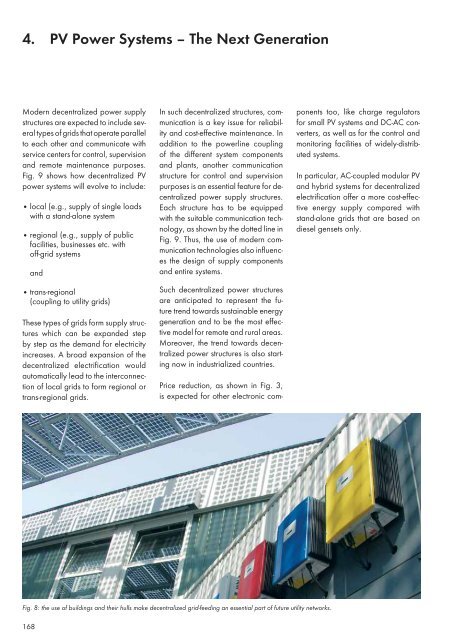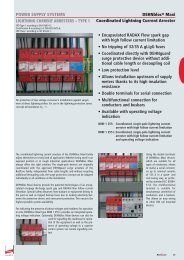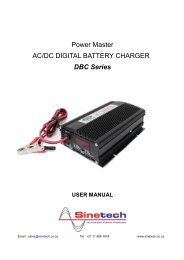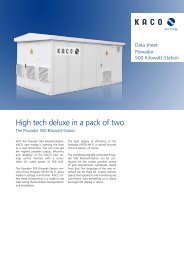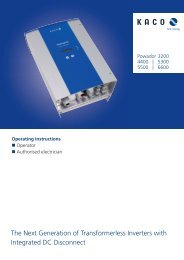Sunny Island Catalgoue - Sinetech
Sunny Island Catalgoue - Sinetech
Sunny Island Catalgoue - Sinetech
You also want an ePaper? Increase the reach of your titles
YUMPU automatically turns print PDFs into web optimized ePapers that Google loves.
4. PV Power Systems – The Next Generation<br />
Modern decentralized power supply<br />
structures are expected to include several<br />
types of grids that operate parallel<br />
to each other and communicate with<br />
service centers for control, supervision<br />
and remote maintenance purposes.<br />
Fig. 9 shows how decentralized PV<br />
power systems will evolve to include:<br />
• local (e.g., supply of single loads<br />
with a stand-alone system<br />
• regional (e.g., supply of public<br />
facilities, businesses etc. with<br />
off-grid systems<br />
and<br />
• trans-regional<br />
(coupling to utility grids)<br />
These types of grids form supply structures<br />
which can be expanded step<br />
by step as the demand for electricity<br />
increases. A broad expansion of the<br />
decentralized electrification would<br />
automatically lead to the interconnection<br />
of local grids to form regional or<br />
trans-regional grids.<br />
In such decentralized structures, communication<br />
is a key issue for reliability<br />
and cost-effective maintenance. In<br />
addition to the powerline coupling<br />
of the different system components<br />
and plants, another communication<br />
structure for control and supervision<br />
purposes is an essential feature for decentralized<br />
power supply structures.<br />
Each structure has to be equipped<br />
with the suitable communication technology,<br />
as shown by the dotted line in<br />
Fig. 9. Thus, the use of modern communication<br />
technologies also influences<br />
the design of supply components<br />
and entire systems.<br />
Such decentralized power structures<br />
are anticipated to represent the future<br />
trend towards sustainable energy<br />
generation and to be the most effective<br />
model for remote and rural areas.<br />
Moreover, the trend towards decentralized<br />
power structures is also starting<br />
now in industrialized countries.<br />
Price reduction, as shown in Fig. 3,<br />
is expected for other electronic components<br />
too, like charge regulators<br />
for small PV systems and DC-AC converters,<br />
as well as for the control and<br />
monitoring facilities of widely-distributed<br />
systems.<br />
In particular, AC-coupled modular PV<br />
and hybrid systems for decentralized<br />
electrification offer a more cost-effective<br />
energy supply compared with<br />
stand-alone grids that are based on<br />
diesel gensets only.<br />
Fig. 8: the use of buildings and their hulls make decentralized grid-feeding an essential part of future utility networks.<br />
168


